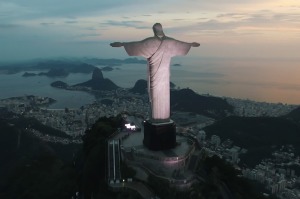Hidden Chamber In Great Pyramid Of Giza?
Despite decades of study, the Great Pyramid of Giza continues to surprise scientists with its secrets. Recently, Egyptologists discovered the presence of a large empty space within Khufu's pyramid—a void that's signaling the presence of a possible hidden chamber.
Using a technique that leverages the power of cosmic rays called muons, scientists studying the pyramid discovered a mysterious cavity. Space is at least 30 meters long although they are currently unsure whether it's straight or inclined or whether it's one large space or a collection of smaller ones.
"What we are sure about is that this big void is there," said Mehdi Tayoubi, president of the nonprofit Heritage Innovation Preservation Institute in Paris, which led the effort. "But we need to understand [it] better."
The Great Pyramid of Giza was built at the behest of the Pharaoh Khufu, also known as Cheops, whose reign lasted from 2509 to 2483 BC. The largest of the pyramids, it stands some 139 meters high and 230 meters wide.
Like most pyramids in Egypt, it served as the burial ground of the pharaoh. Tourists enter the pyramid from a tunnel that was dug at the behest of Caliph al-Ma'mun around AD 820.
There are currently three known chambers that lay inside the massive structure of stone: an underground chamber, the Queen's chamber, and finally the King's chamber. All three chambers are connected via corridors the largest being the Grand Gallery being 8.6 meters high, 46.7 meters long and up to 2.1 meters wide.
The King's and Queen's chambers each have two "air shafts" that were mapped by robots between 1990 and 2010. However, much of the Great Pyramid of Giza's interior remains a mystery due to a lack of documents from Khufu's time describing the building's design and construction.
Due to their mysterious origins, the pyramids have often been the subject of many conspiracy theories regarding extraterrestrials. However, despite a number of anecdotal evidence, no definitive proof has been found.




























